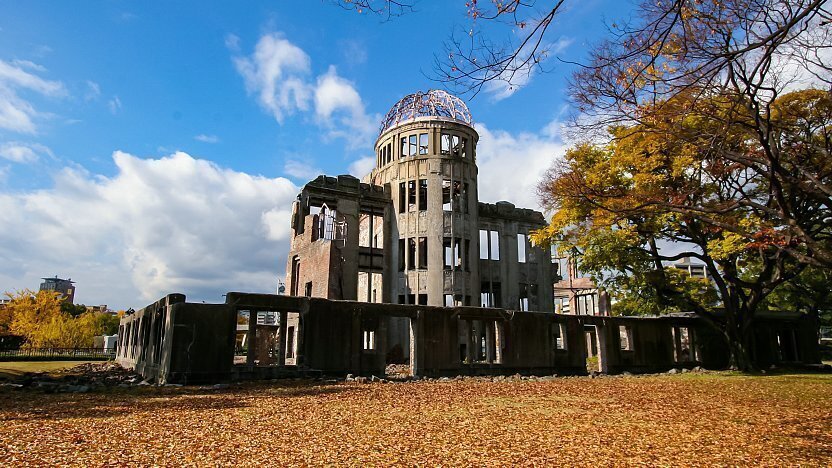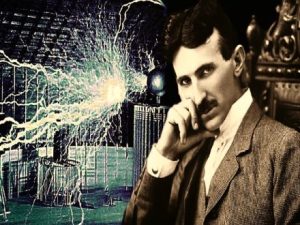The Atomic Bomb Dome, also known as the Hiroshima Peace Memorial, is a UNESCO World Heritage Site located in Hiroshima, Japan. It is a symbolic reminder of the devastation caused by the atomic bombing of Hiroshima on August 6, 1945, during the final stages of World War II.
Before the bombing, the building was known as the Hiroshima Prefectural Industrial Promotion Hall and was designed by Czech architect Jan Letzel. The building was located in the heart of Hiroshima’s industrial and commercial district and was one of the few structures left standing after the explosion of the atomic bomb.

The building was initially slated for demolition after the war but was eventually preserved as a reminder of the horrors of nuclear warfare. In 1966, the Atomic Bomb Dome was declared a national treasure of Japan, and in 1996, it was designated as a UNESCO World Heritage Site.
Today, the Atomic Bomb Dome serves as a powerful symbol of peace and a reminder of the dangers of nuclear weapons. It attracts visitors from all over the world who come to pay their respects to the victims of the bombing and to learn more about the history of the atomic bomb and its devastating effects.
The Atomic Bomb Dome is a solemn reminder of the tragedy of war and the importance of working towards peace and disarmament. Its preservation serves as a reminder of the need to prevent such atrocities from ever happening again and to work towards a world where nuclear weapons are no longer a threat to humanity.
The Atomic Bomb Dome is a powerful symbol of the destructive capabilities of nuclear weapons. The bombing of Hiroshima, which claimed the lives of approximately 140,000 people, was a horrific event that changed the course of history and ushered in the nuclear age. The decision to drop the atomic bomb remains a controversial topic, with many arguing that it was necessary to end the war and save lives, while others argue that it was a war crime and a violation of international law.
Regardless of one’s perspective on the bombing, the Atomic Bomb Dome serves as a reminder of the human cost of war and the devastating effects of nuclear weapons. The building’s skeletal frame and shattered walls are a haunting reminder of the destruction wrought by the bomb and a testament to the resilience of the people of Hiroshima who rebuilt their city from the ashes.
Today, the Atomic Bomb Dome is part of the Hiroshima Peace Memorial Park, which also includes a museum and various other memorials dedicated to the victims of the bombing. The museum contains exhibits detailing the events leading up to the bombing, the bombing itself, and its aftermath. Visitors can learn about the science behind the bomb, the impact of the bombing on the city and its people, and the efforts to promote peace and disarmament in the aftermath of the bombing.
The Atomic Bomb Dome and the surrounding Peace Memorial Park serve as a powerful reminder of the need to work towards a world free of nuclear weapons and to promote peace and understanding among all peoples. The site attracts visitors from all over the world, and serves as a beacon of hope for a future in which the horrors of war and nuclear weapons are consigned to the past.
Some questions and their answers about the Atomic Bomb Dome in Japan:
- What is the Atomic Bomb Dome in Japan?
The Atomic Bomb Dome is a building located in Hiroshima, Japan, that was partially destroyed by the atomic bomb that was dropped on the city during World War II.
- Why is the Atomic Bomb Dome important?
The Atomic Bomb Dome is important because it serves as a powerful symbol of the destructive capabilities of nuclear weapons, and as a reminder of the human cost of war.
- Who designed the Atomic Bomb Dome?
The Atomic Bomb Dome was designed by Czech architect Jan Letzel.
- What happened to the building during the atomic bombing?
The building was located near the epicenter of the explosion, and its dome and walls were partially destroyed by the blast and the resulting fires.
- Why was the Atomic Bomb Dome preserved?
The Atomic Bomb Dome was preserved as a symbol of the horrors of nuclear warfare, and as a reminder of the need to work towards peace and disarmament.
- What other memorials are located in the Hiroshima Peace Memorial Park?
The Hiroshima Peace Memorial Park contains a museum and various other memorials dedicated to the victims of the bombing, including the Children’s Peace Monument and the Memorial Cenotaph.
- How many people were killed in the bombing of Hiroshima?
It is estimated that approximately 140,000 people were killed as a result of the bombing, either immediately or in the months and years that followed due to radiation sickness and other health effects.
- When was the Atomic Bomb Dome declared a UNESCO World Heritage Site?
The Atomic Bomb Dome was declared a UNESCO World Heritage Site in 1996.
- What is the significance of the Atomic Bomb Dome in Japanese culture?
The Atomic Bomb Dome is a significant symbol in Japanese culture because it represents the country’s commitment to peace and the importance of remembering the past. The bombing of Hiroshima was a traumatic event in Japanese history, and the preservation of the Atomic Bomb Dome serves as a reminder of the need to work towards a world without nuclear weapons.
- Can visitors enter the Atomic Bomb Dome?
No, visitors are not allowed to enter the Atomic Bomb Dome due to safety concerns. However, they can view the building from a nearby bridge and from various locations within the Hiroshima Peace Memorial Park.
- How does the Atomic Bomb Dome promote peace and understanding?
The Atomic Bomb Dome promotes peace and understanding by serving as a powerful symbol of the destructive capabilities of nuclear weapons and the importance of working towards peace and disarmament. It also serves as a reminder of the human cost of war and the need to promote understanding and compassion among all peoples.
- What is the Children’s Peace Monument?
The Children’s Peace Monument is a memorial located within the Hiroshima Peace Memorial Park dedicated to the memory of the many children who died as a result of the bombing. It was inspired by the story of a young girl named Sadako Sasaki, who developed leukemia as a result of the bombing and who folded paper cranes in the hope of achieving peace. Today, visitors to the Children’s Peace Monument can view thousands of paper cranes that have been folded and sent from around the world as a symbol of peace and hope.
- How long did it take for the city of Hiroshima to recover from the bombing?
It took many years for the city of Hiroshima to recover from the bombing, and the effects of the bomb are still felt today. However, the city has made significant strides towards rebuilding and promoting peace, and the Hiroshima Peace Memorial Park and the Atomic Bomb Dome serve as symbols of the city’s resilience and commitment to peace.
To reach the Atomic Bomb Dome in Hiroshima, Japan, several transportation options are available:
1. By Air:
- Nearest Airport: Hiroshima Airport (HIJ), located approximately 50 km (31 miles) from the city center.
- Transportation from Airport:
- Airport Limousine Bus: A direct bus service from Hiroshima Airport to Hiroshima Station takes about 45-50 minutes.
- Taxi/Private Transfer: Taxis or private transfers are available, taking about 60-70 minutes depending on traffic.
2. By Train:
- Shinkansen (Bullet Train):
- From Tokyo: The Nozomi Shinkansen connects Tokyo to Hiroshima in about 4 hours.
- From Osaka/Kyoto: The journey takes about 1.5-2 hours via the Nozomi Shinkansen.
- Hiroshima Station: From Hiroshima Station, the Atomic Bomb Dome is easily accessible by public transport.
3. By Tram:
- Hiroshima Electric Railway (Hiroden):
- Take Tram Line 2 or 6 from Hiroshima Station, which takes about 15 minutes to reach the Genbaku-Domu Mae (Atomic Bomb Dome) stop.
- Tram Accessibility: The tram is a convenient and scenic way to reach the Atomic Bomb Dome, offering views of the city along the way.
4. By Bus:
- Local Bus: Several local buses connect Hiroshima Station and other parts of the city to the Atomic Bomb Dome.
- Hiroshima Sightseeing Loop Bus: This tourist-friendly bus service stops at key attractions, including the Atomic Bomb Dome, providing a comfortable and informative way to explore the city.
5. By Bicycle:
- Bicycle Rentals: Hiroshima is a bike-friendly city, with several rental services available. Biking to the Atomic Bomb Dome is a pleasant option, especially along the river paths.
- Bike Sharing: Hiroshima has a bike-sharing system that allows you to pick up and drop off bicycles at various locations, including near the Atomic Bomb Dome.
6. By Foot:
- Walking Distance: The Atomic Bomb Dome is centrally located in Hiroshima and can be reached on foot from nearby attractions such as Hiroshima Peace Memorial Park and Hiroshima Castle.
These transportation options make it easy for visitors to reach the Atomic Bomb Dome, a poignant and historically significant site in Hiroshima.
Map Location : https://maps.app.goo.gl/siBafr2xizcs65xG6






